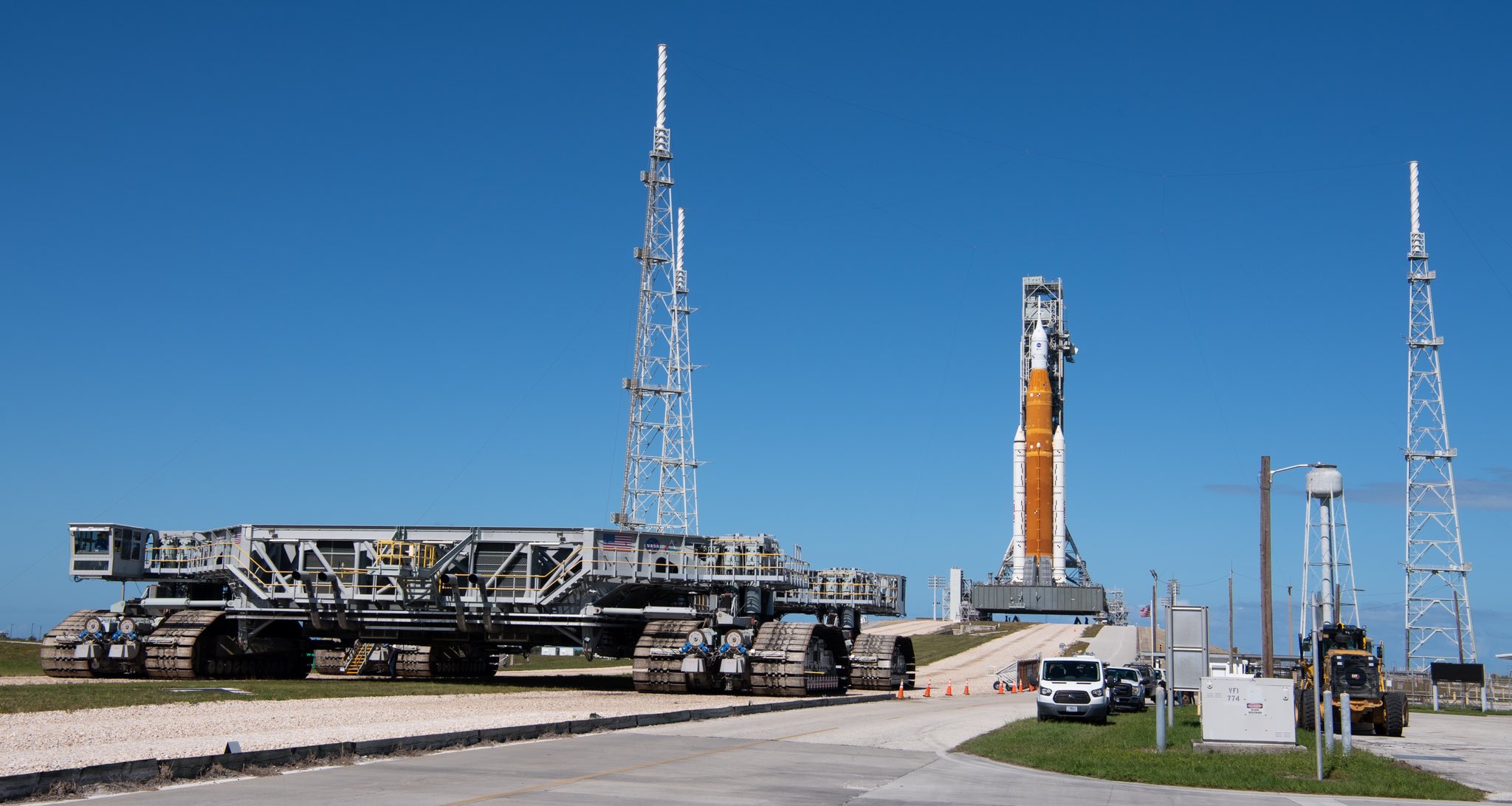STORY WRITTEN FOR CBS NEWS & USED WITH PERMISSION

NASA’s $4.1 billion Artemis moon rocket, exposed to the elements atop its Kennedy Space Center launch pad, was rocked by high winds and driving rain early Thursday as Hurricane Nicole roared ashore just south of the spaceport.
With blastoff on a long-delayed maiden flight on tap next week, sensors at pad 39B recorded gusts as high as 100 miles per hour atop a 467-foot-tall lightning tower near the rocket. But winds at the 60-foot-level of the launch gantry, which are part of the booster’s structural certification, peaked at 82 mph, just below the 85 mph limit.
The observed winds were “within the rocket’s capability,” said Jim Free, manager of exploration systems at NASA Headquarters. “We anticipate clearing the vehicle for those conditions shortly.”
“Our team is conducting initial visual check outs of the rocket, spacecraft and ground system equipment with the cameras at the launch pad,” he said in a Twitter post. “Camera inspections show very minor damage such as loose caulk and tears in weather coverings. The team will conduct additional on-site walk down inspections of the vehicle soon.”
In any case, the 322-foot-tall Space Launch System rocket appeared to weather the storm with no obvious signs of trouble, held solidly in place by a sturdy stabilizer extending from its mobile launch gantry, along with eight massive bolts, four at the base of each of its two solid-fuel boosters, that hold the rocket down before liftoff.
The space center was closed Wednesday and only a small rideout team stayed on site overnight. Workers were not expected to gain access to the launch pad to begin carrying out detailed inspections until late Thursday at the earliest.
In the meantime, engineers reviewed telemetry from a variety of sensors, including strain gauges on the hold-down bolts and stabilizer to determine the forces acting on the huge rocket.
“The SLS rocket is designed to withstand 85-mph winds at the 60-foot level with structural margin,” NASA said in a November 8 blog post.
Data on a NASA web page showing wind speeds at various points on and around pad 39B showed gusts exceeding 85 mph, including the 100-mph reading, but it wasn’t immediately clear how those readings fit into NASA’s safety guidelines. A wind gauge on the roof of the CBS News bureau 4.2 miles from the pad registered gusts as high as 87 mph.
The Space Launch System rocket is the most powerful ever built for NASA, with a ground-shaking 8.8 million pounds of thrust at liftoff from four shuttle-era main engines and two extended strap-on solid-fuel boosters.
The goal of the Artemis 1 mission is to boost and unpiloted Orion crew capsule on a 25-day flight around the moon, ending with a high-speed re-entry and splashdown in the Pacific Ocean. If the flight goes well, NASA hopes to launch four astronauts around the moon in 2024, followed by the first in a series of landings starting in 2025 or 2026.
NASA had hoped to launch the Artemis 1 mission on Monday, but last week managers opted to delay the flight two days to give the team time to make hurricane preparations.
If no major problems are found in the wake of Nicole, and if senior managers decide to press ahead, countdown clocks will start ticking at 1:54 a.m. EST Monday, setting up a launch attempt at 1:04 a.m. Wednesday.
Backup opportunities are available on November 19, at 1:45 a.m., and on November 25, the day after Thanksgiving, at 10:10 a.m.
Hurricane Nicole was the latest bump on what has turned out to be an exceptionally rocky road to launch.
The SLS rocket was first rolled to the pad for an initial fueling test last March, some 238 days ago, and has now made seven trips to and from the Vehicle Assembly Building while engineers dealt with multiple fuel leaks and unrelated glitches.
Before its most recent trip to the pad, senior managers said they were aware a sub-tropical storm was developing in the Caribbean. But forecasters told them there was only a 30 percent chance it would develop into a named storm and that if it came ashore near the space center, gusts likely would not exceed 40 knots.
As the storm strengthened and moved toward Florida, managers opted not to roll the SLS back to the protection of the Vehicle Assembly Building.
“With the unexpected change to the forecast, returning to the Vehicle Assembly Building was deemed to be too risky in high winds,” Free said. “The team decided the launch pad was the safest place for the rocket to weather the storm.”
